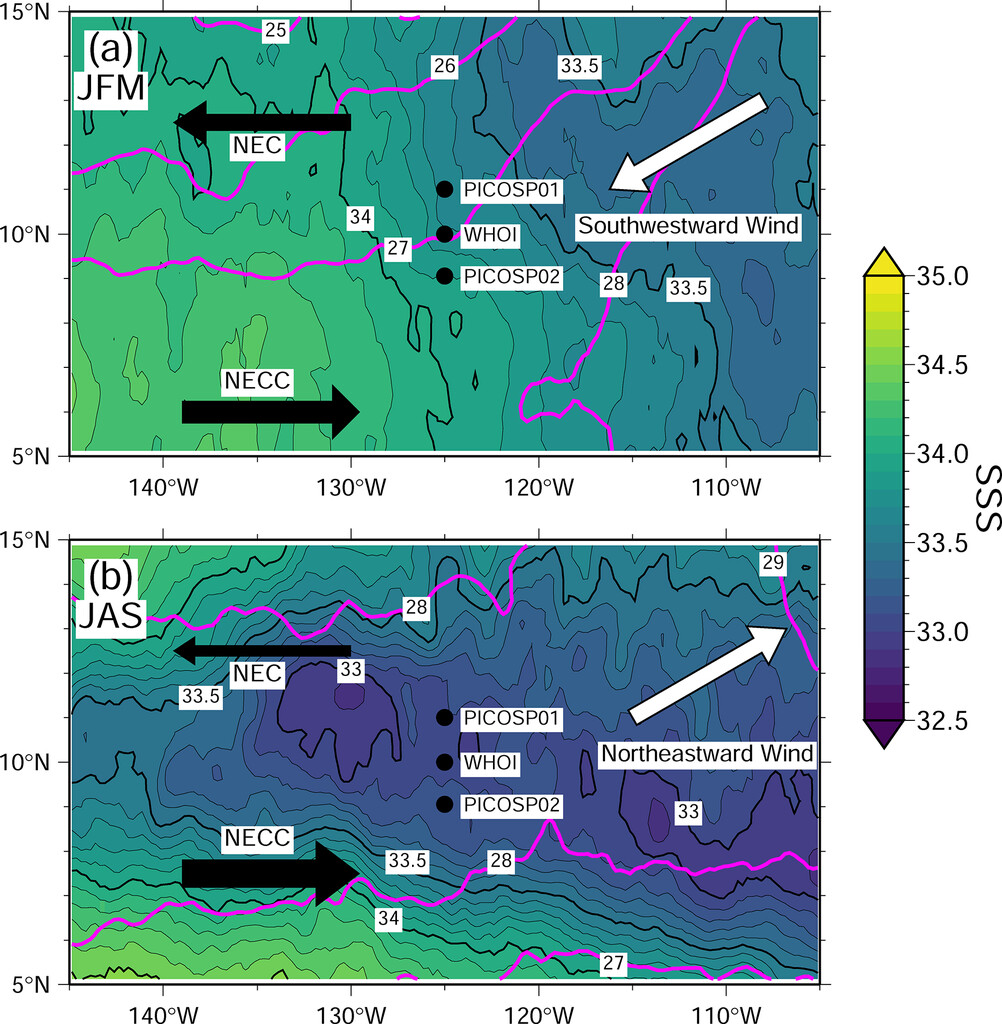The Barrier Layer Effect on the Heat and Freshwater Balance from Moored Observations in the Eastern Pacific Fresh Pool
Shota Katsura, Janet Sprintall, J. Thomas Farrar, Dongxiao Zhang, and Meghan F. Cronin
Published in Journal of Physical Oceanography, Aug 2022
Formation and evolution of barrier layers (BLs) and associated temperature inversions (TIs) were investigated using a 1-yr time series of oceanic and air–sea surface observations from three moorings deployed in the eastern Pacific fresh pool. BL thickness and TI amplitude showed a seasonality with maxima in boreal summer and autumn when BLs were persistently present. Mixed layer salinity (MLS) and mixed layer temperature (MLT) budgets were constructed to investigate the formation mechanism of BLs and TIs. The MLS budget showed that BLs were initially formed in response to horizontal advection of freshwater in boreal summer and then primarily maintained by precipitation. The MLT budget revealed that penetration of shortwave radiation through the mixed layer base is the dominant contributor to TI formation through subsurface warming. Geostrophic advection is a secondary contributor to TI formation through surface cooling. When the BL exists, the cooling effect from entrainment and the warming effect from detrainment are both significantly reduced. In addition, when the BL is associated with the presence of a TI, entrainment works to warm the mixed layer. The presence of BLs makes the shallower mixed layer more sensitive to surface heat and freshwater fluxes, acting to enhance the formation of TIs that increase the subsurface warming via shortwave penetration.

Fig. Distribution of mean sea surface salinity from Soil Moisture Active Passive (SMAP) (black contours and color) and mean sea surface temperature from Optimum Interpolation Sea Surface Temperature (OISST) (magenta contours) averaged over (a) January–March and (b) July–September in 2016–17. Black circles indicate the location of the PICOSP01 (11°N, 125°W), WHOI (10°N, 125°W), and PICOSP02 (9.05°N, 125°W) moorings deployed as part of the SPURS-2 field campaign. The westward North Equatorial Current (NEC) and the eastward North Equatorial Countercurrent (NECC) are schematically indicated by black arrows. White arrows schematically indicate the southwestward wind in boreal winter in (a) and the northeastward wind in boreal summer in (b) over the SPURS-2 mooring sites.
Katsura, S., Sprintall, J., Farrar, J. T., Zhang, D., & Cronin, M. F. (2022). The Barrier Layer Effect on the Heat and Freshwater Balance from Moored Observations in the Eastern Pacific Fresh Pool, Journal of Physical Oceanography, 52(8), 1705-1730. https://journals.ametsoc.org/view/journals/phoc/52/8/JPO-D-21-0243.1.xml